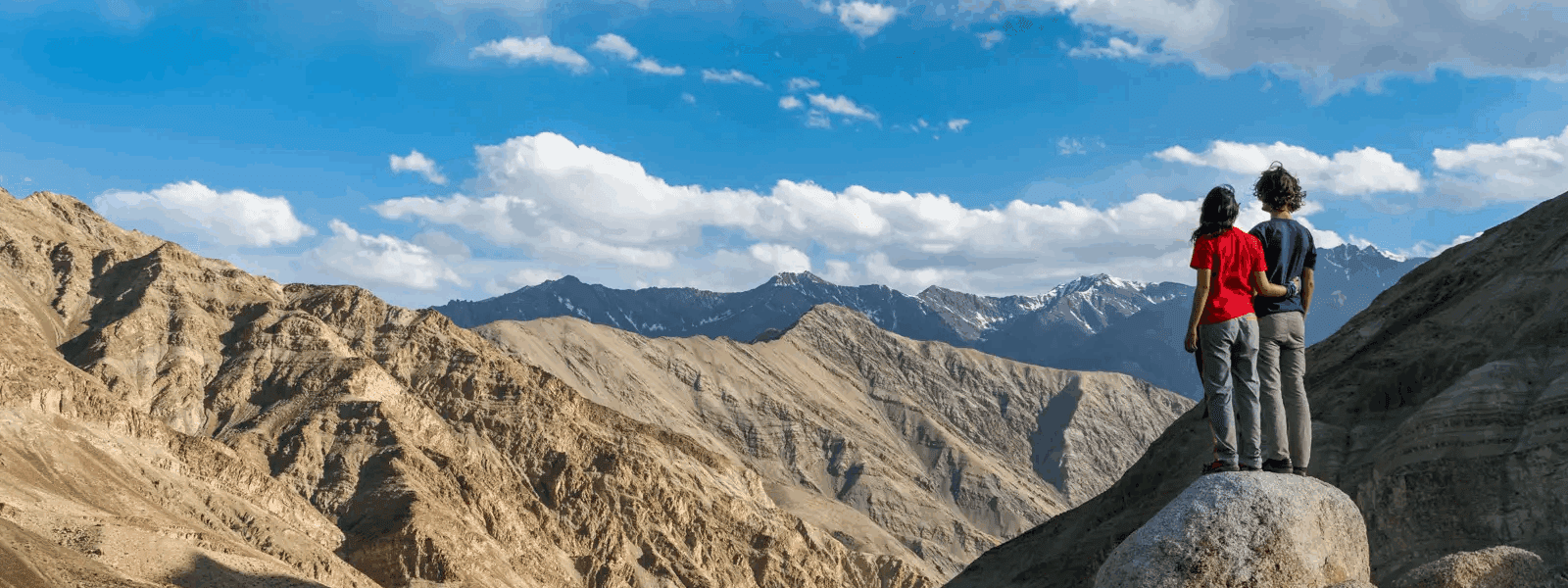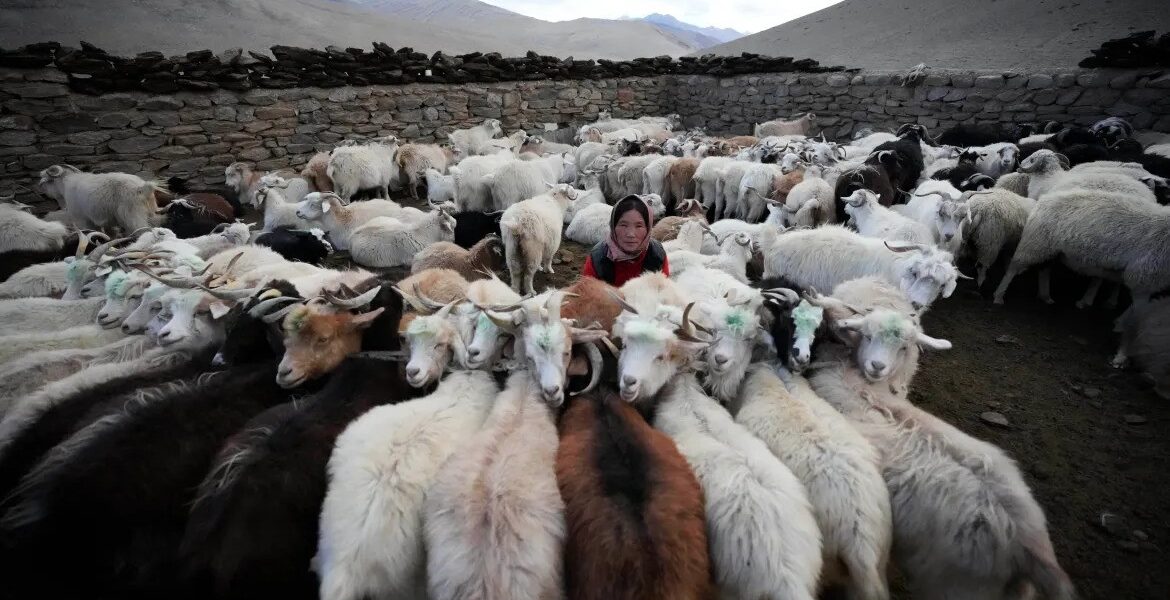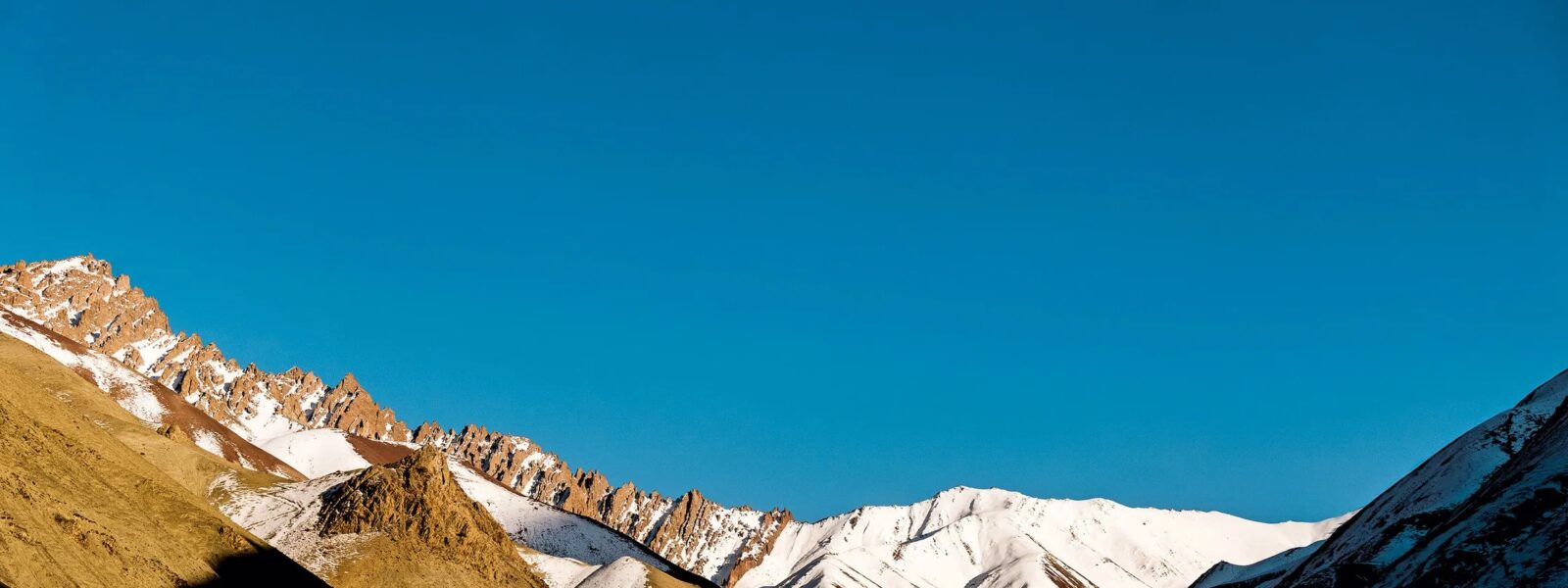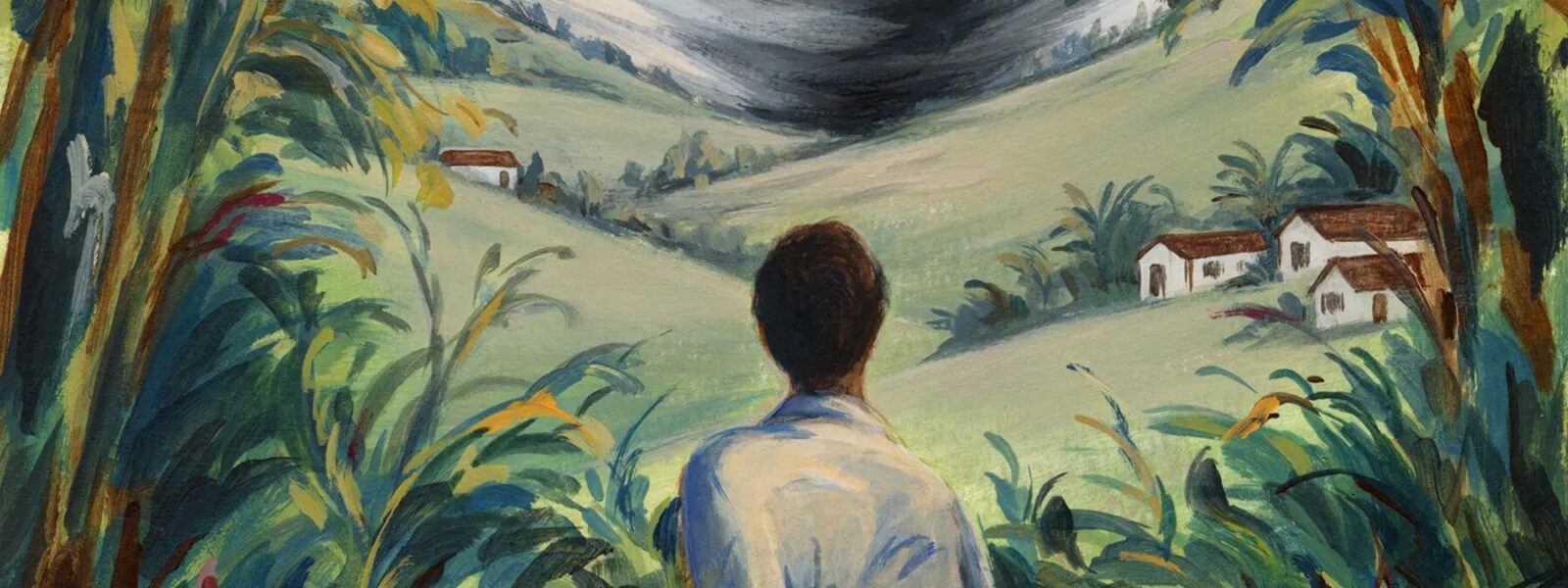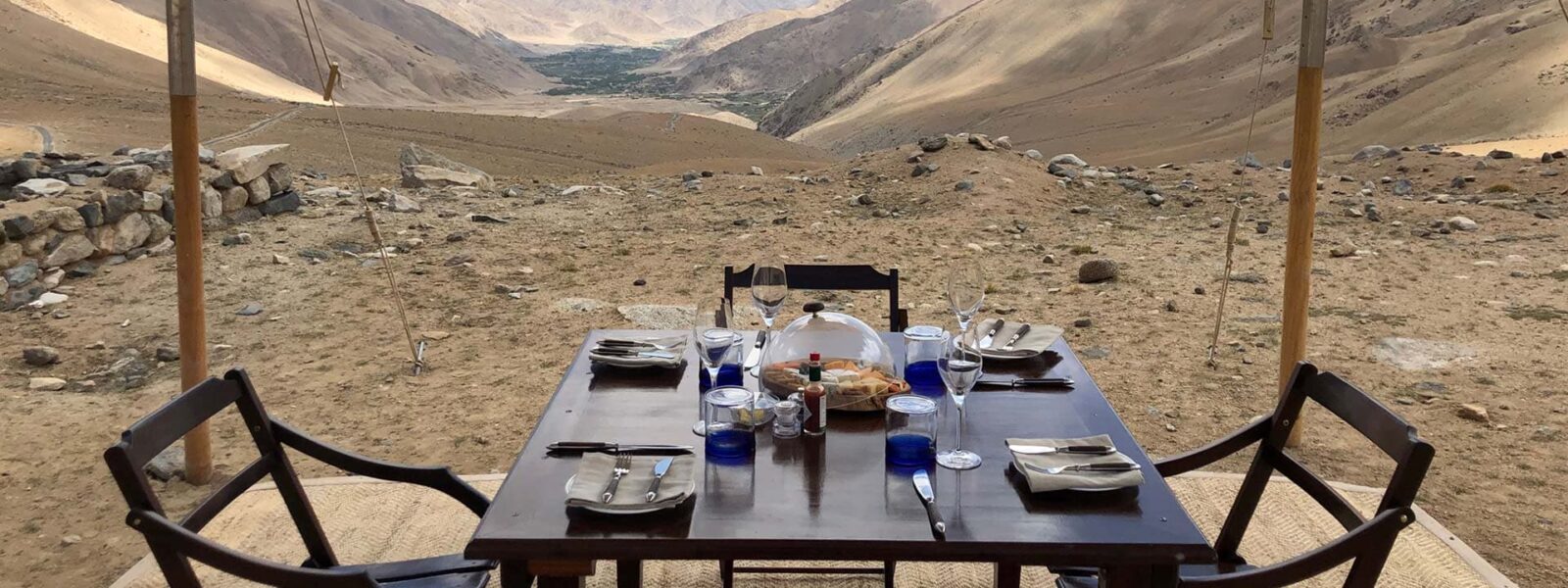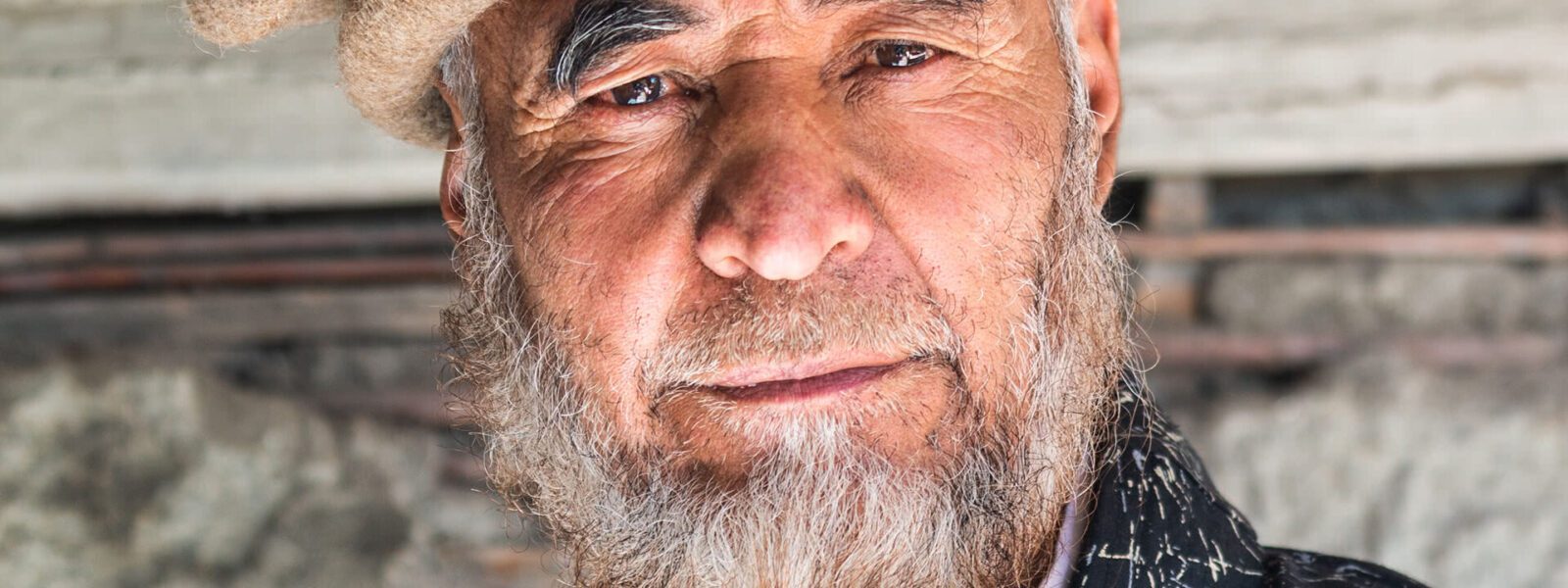Why Choose the Sham Valley Trek in Ladakh?
Nestled in the heart of Ladakh’s lower elevations, the Sham Valley Trek is often called the most accessible and rewarding cultural trek in the Himalayas. Ideal for first-time trekkers, families, and slow travelers alike, this route offers more than scenic landscapes—it’s a passage through Ladakh’s living heritage. With its short walking distances, inviting homestays, and ancient monasteries, the Sham Valley Trek delivers the rare blend of gentle adventure and deep cultural immersion.
Stretching across picturesque villages such as Likir, Yangthang, Hemis Shukpachan, and Tingmosgang, this route unfolds at altitudes ranging between 3,000 and 3,900 meters, making it one of the few treks in Ladakh where you don’t need to be a seasoned mountaineer. It’s a gateway to experiencing Ladakh without altitude strain—perfect for those arriving from sea level and seeking a gradual acclimatization.
But what makes this trek truly special? It’s the rhythm of daily life: prayer wheels spinning in the breeze, locals greeting you with warm “Juleys,” and the golden hues of apricot orchards surrounding ancient homes. You don’t just walk through the valley—you live in it. By staying in family-run homestays, you’re supporting community-based tourism while gaining intimate insight into the Ladakhi way of life.
Whether you’re sipping butter tea in a clay kitchen in Hemis Shukpachan or listening to monks chant inside the timeworn halls of Likir Monastery, every step brings you closer to the soul of this remote region. And while many Ladakh treks lead you to wild, uninhabited valleys, the Sham Valley Trek invites you into the heart of its people. The villages you pass are not relics of the past—they’re breathing, thriving communities carrying forward ancient traditions.
For those seeking an easy trek in Ladakh, this route is more than a footpath—it’s a narrative. A thread connecting history, faith, and local hospitality. It is this uniquely human element that transforms the Sham Valley Trek from a scenic walk into a journey worth remembering.
In the sections ahead, we’ll guide you through each village, recommend the best local homestays, highlight key monasteries to visit, and offer planning tips to make the most of your trek. But for now, remember this: in Sham Valley, the pace is slow, the smiles are genuine, and every curve in the trail reveals another story waiting to be discovered.

Best Time to Visit the Sham Valley Trek
Timing is everything when it comes to trekking in Ladakh, and the Sham Valley is no exception. Although it’s often dubbed the “Baby Trek” for its relatively gentle gradients, the experience is greatly enhanced when you choose the right season. Fortunately, the Sham Valley Trek offers a generous window of opportunity compared to high-altitude routes in Ladakh.
April to October is generally considered the trekking season in Sham Valley, but each month brings a unique flavor to the journey. If you dream of walking through villages wrapped in blush tones of apricot and almond blossoms, April is your ideal window. This is when the valley comes alive with the soft pastels of spring, and the days are crisp and clear. The snow has mostly melted from the paths, making trails walkable, yet the mountains still wear a white crown—a contrast that leaves a lasting impression.
May to June brings longer daylight hours and slightly warmer temperatures, making it perfect for travelers who enjoy pleasant hiking conditions and blooming barley fields. This is also the time when you’ll encounter villagers busy in their fields, and get a deeper sense of Ladakhi rural life in full swing. Photographers and cultural explorers often favor this period for its balance of natural beauty and human activity.
July and August fall within Ladakh’s short summer and attract the highest number of visitors. The weather is warm, the skies are a vivid blue, and the trails are bustling with other trekkers. While this is peak season, the Sham Valley still offers a sense of peace, especially in the smaller hamlets like Hemis Shukpachan. However, with increased foot traffic, homestays can fill up quickly—so booking in advance is wise.
September to early October marks the golden end of the trekking season. The harvest is in full motion, and the barley fields turn amber and gold. Mornings and evenings start to carry a chill, but daytime trekking remains comfortable. This is arguably the most photogenic time to explore the Sham Valley, with soft sunlight bathing the mountains and village rooftops.
While winter trekking is not typical here due to freezing temperatures and closed accommodations, some adventurous travelers still visit homestay villages in winter to experience traditional life in Ladakh under snow. However, this requires special arrangements and local guidance.
Whichever season you choose, remember that Sham Valley isn’t just about the landscape—it’s about the mood of the land, the pulse of its people, and the rhythm of seasons that shape their lives. Choose your month, pack with purpose, and let the valley welcome you in its own time.

A Village-to-Village Journey: Main Stops on the Sham Trek
The Sham Valley Trek unfolds like a storybook—each chapter marked by a different village, each one offering its own rhythm, texture, and sense of place. The journey doesn’t just take you across landscapes; it takes you through the daily life of Ladakhi people, their hospitality, their homes, and their sacred spaces. This is a trek of connection, a path that links culture, geography, and memory.
Likir – Where the Journey Begins
Most Sham Valley treks begin in the village of Likir, home to the majestic Likir Monastery. Perched above the village and framed by rugged cliffs, this monastery is known for its towering golden Maitreya Buddha statue and vibrant frescoes. It’s the perfect spiritual sendoff before setting out on foot. The village itself is small but welcoming, with traditional homes, barley fields, and a palpable sense of quiet dignity.
Yangthang – A Gentle Ascent into Village Life
From Likir, the trail winds gently uphill and downhill toward Yangthang, your first overnight stop if following the classic route. This village offers a stunning backdrop of mountains and stream-fed fields. Many travelers describe Yangthang as their favorite overnight stay—not because it’s grand, but because it’s real. Here, you’ll likely share a room in a local home, eat Ladakhi bread with apricot jam, and fall asleep beneath thick handmade quilts.
Hemis Shukpachan – The Heart of Apricot Country
Perhaps the most picturesque stop on the trek, Hemis Shukpachan sits nestled among groves of willow trees and apricot orchards. The name itself hints at its charm—“Shukpa” refers to the aromatic juniper bushes that grow abundantly here. The village is known for its spirituality, with prayer wheels dotting the pathways and stupas rising from the fields. It’s also one of the best places to experience a true homestay trek in Ladakh, offering rich conversations with locals and hearty traditional meals.
Tingmosgang – Where History and Hospitality Meet
Often the final stop of the Sham trek, Tingmosgang is more than a village—it’s a historical landmark. Once the capital of a small Ladakhi kingdom, its hilltop palace ruins still whisper stories of royalty and resistance. The trek to Tingmosgang is longer than previous segments but rewarding. You’ll descend into a fertile valley where stone homes line ancient canals and fields shimmer in green and gold. Tingmosgang also connects to several side treks and extensions, making it a great place to linger or move deeper into Ladakh’s interior.
Each of these villages is more than just a dot on a map. They are homes, temples, and communities—inviting you in, even if just for a night. The Sham Valley Trek is defined not by distance or altitude but by the warmth and resilience of the people who live along its path. From the quiet reverence of Likir Monastery to the apricot-scented air of Hemis Shukpachan, this journey is stitched together by stories, shared meals, and moments of stillness you’ll carry long after the trek ends.
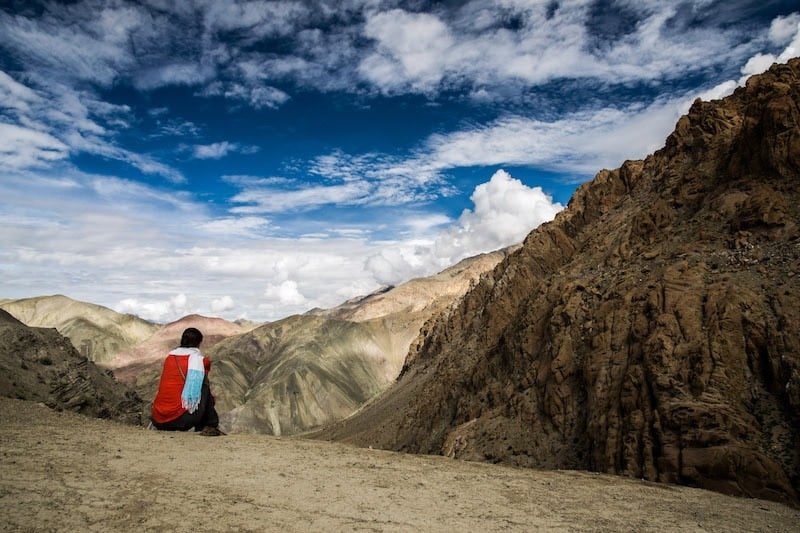
Where to Stay: Homestays and Local Life
One of the most memorable aspects of the Sham Valley Trek isn’t found on a map or in elevation profiles—it’s found inside Ladakhi homes. The villages of Sham Valley offer some of the most authentic and heartwarming homestay experiences in India, allowing travelers to go beyond sightseeing and step into the rhythm of mountain life. In place of hotels or tents, you sleep under hand-woven blankets, eat in sun-warmed kitchens, and share space with families who have lived in these valleys for generations.
What is a Homestay Trek?
In the Sham Valley, the concept of homestay trekking is simple and powerful. Each night, you rest in a different village, staying in a room offered by a local family. Meals are prepared using local ingredients—often grown in the family’s backyard—and conversations unfold naturally over cups of butter tea or fresh apricot juice. Unlike commercial lodges, these homes welcome you as a guest rather than a customer, creating space for cultural exchange, storytelling, and mutual respect.
What to Expect in a Ladakhi Homestay
Rooms are typically simple but comfortable. You’ll often find a mattress placed on a raised wooden platform, thick woolen blankets, and traditional décor such as prayer flags or family photos. Most homestays offer clean shared toilets and sometimes solar-heated water for washing. Meals are eaten together in the kitchen, where you’ll likely be invited to sit cross-legged on carpets and enjoy dishes like thukpa (noodle soup), skyur (yogurt stew), and handmade momos.
In Hemis Shukpachan and Yangthang especially, homestay culture is well-developed. Families are accustomed to welcoming international travelers and may even speak basic English or Hindi. The warmth and hospitality are genuine—and so is the food. If you’re lucky, your host might offer dried apricots from last season’s harvest or a sip of traditional barley beer.
Why Choose a Homestay Over a Guesthouse or Camp?
Homestays offer more than just shelter. They’re a gateway to understanding Ladakhi values—self-sufficiency, community, reverence for nature, and spiritual grounding. By choosing homestays, you’re supporting sustainable tourism and helping preserve local traditions. Moreover, these stays reduce your environmental impact compared to camping or larger accommodations. It’s a slower, deeper way to travel, and one that aligns perfectly with the soul of the Sham Valley.
Each homestay along the route—from the quiet farms of Yangthang to the cultural crossroads of Tingmosgang—tells its own story. No two stays are the same. And that’s exactly the point. In a region where time seems to pass differently, the homestay experience becomes more than just lodging—it becomes part of the journey.
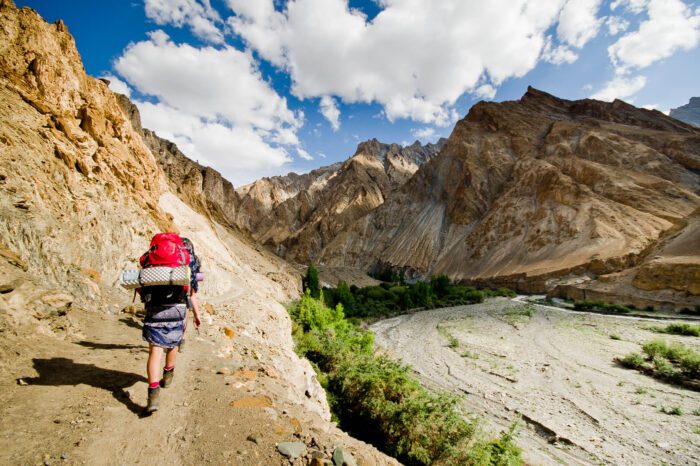
Monasteries Along the Route: Silent Teachers of the Himalayas
As you walk through the villages of the Sham Valley, you’ll find that your footsteps often lead not just across landscapes, but toward Ladakh’s spiritual heart. Scattered throughout this peaceful valley are monasteries that serve not only as places of worship, but also as centers of learning, guardians of culture, and sanctuaries of silence. Whether perched on rocky cliffs or nestled beside barley fields, each monastery you encounter along the trek offers a different kind of elevation—one that lifts the spirit as much as the body.
Likir Monastery – The Gateway to the Trek
Your introduction to the sacred architecture of Ladakh often begins at Likir Monastery, an imposing yet tranquil site overlooking the starting village of Likir. Home to the Gelugpa sect of Tibetan Buddhism, this monastery is known for its massive gold-plated Maitreya Buddha statue that rises 23 meters into the sky. Inside, prayer halls echo with the sound of ancient chants and the soft flicker of butter lamps. Likir is not just a photogenic backdrop—it is a living center of faith that anchors the beginning of your journey.
Hemis Shukpachan – A Village Steeped in Sacred Tradition
While Hemis Shukpachan doesn’t house a large monastery like Likir, it is still deeply spiritual. Numerous small stupas, prayer wheels, and mani walls line the village pathways, and locals often pause to spin wheels or whisper mantras as they pass. The presence of juniper groves (shukpa) gives the village its name and its scent—believed to purify the air and protect the village. You may not find a grand gompa here, but you’ll feel the essence of Buddhist practice in the rhythms of daily life.
Rizong Monastery – A Sacred Detour Worth Taking
If time allows, consider a small detour to Rizong Monastery, often called the “Paradise for Meditation.” Hidden in a gorge near Yangthang, this isolated monastery belongs to the Gelugpa order and houses a small community of monks known for their strict discipline. Rizong’s location, carved into the cliffs, adds to its mystical ambiance. It’s a peaceful retreat away from the villages, ideal for those seeking quiet reflection amidst stark beauty.
Alchi Monastery – An Optional Extension for Art Lovers
Though not directly on the trekking route, Alchi Monastery is often visited before or after the Sham trek. Unlike most Ladakhi gompas perched on hilltops, Alchi sits on flat ground beside the Indus River. It’s one of the oldest monasteries in Ladakh and world-renowned for its Indo-Tibetan murals and wall paintings that date back over 1,000 years. Entering Alchi feels like stepping into a museum frozen in time—one that still breathes through prayer and pilgrimage.
Monasteries in Sham Valley are not tourist attractions in the conventional sense. They are spiritual homes where past and present merge, where monks live in simplicity, and where silence speaks louder than words. Whether you pause for a quiet moment at a wayside stupa or sit cross-legged inside a dimly lit prayer room, these places invite you to reflect, reconnect, and move forward with renewed awareness. In a land of high passes and deep traditions, the monasteries are your companions—watchful, wise, and always waiting.
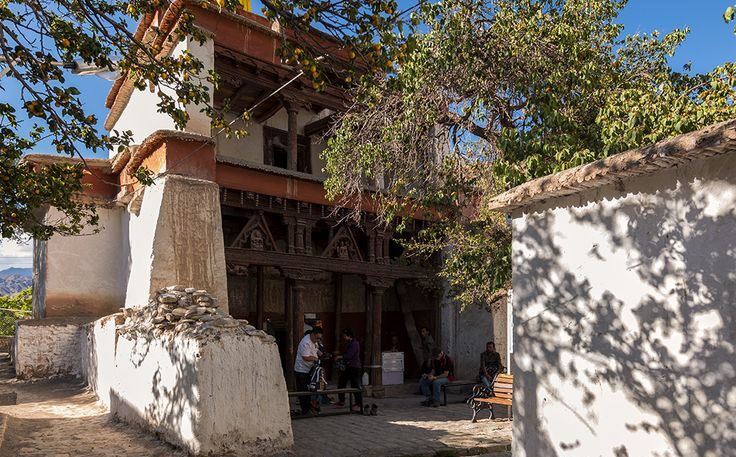
How to Plan Your Sham Valley Trek
Unlike high-altitude expeditions that demand weeks of preparation, the Sham Valley Trek is remarkably approachable—yet planning it well can elevate your journey from enjoyable to unforgettable. This trek offers the perfect balance of accessibility, cultural depth, and natural beauty, making it an excellent choice for both beginners and seasoned hikers looking for a gentler route. Here’s everything you need to know to organize your own trek across this enchanting stretch of Ladakh.
Choosing Your Trekking Duration
The most common Sham Valley trekking itinerary spans 3 to 5 days, depending on your pace and interest in stopping to explore. A popular 3-day route is Likir to Tingmosgang, covering key villages like Yangthang and Hemis Shukpachan. If you have more time, consider extending the walk to Ang or even incorporating visits to nearby monasteries like Alchi and Rizong. Every additional day adds more depth—not just to the trek, but to your understanding of Ladakhi culture.
How to Reach the Starting Point
Your trek will typically start in Likir, about a 2-hour drive from Leh. Shared taxis, private cabs, or pre-arranged transfers are the most common ways to reach the starting village. Some tour operators also offer complete packages including transport, guide, meals, and accommodation. For independent trekkers, it’s advisable to pre-book a ride from Leh, especially during peak season.
Hiring a Guide – Is It Necessary?
Because the route is well-marked and crosses inhabited villages, a guide isn’t mandatory—but it’s highly recommended. Hiring a local guide enriches the experience immensely. They can help translate conversations with homestay hosts, explain the cultural significance of rituals or landmarks, and assist if trail conditions change. Moreover, your participation contributes directly to the local economy and supports sustainable tourism.
Permits and Paperwork
No special trekking permit is required for Indian or foreign travelers doing the Sham Valley Trek, as it lies outside Ladakh’s restricted zones. However, it’s always wise to carry a government-issued photo ID and keep a few photocopies in your pack. If you’re extending your trip toward the Indus Valley or heading toward the Nubra or Pangong regions afterward, Inner Line Permits may be needed.
What to Pack for a Homestay Trek
Because accommodation is indoors, you can travel lighter than you would for camping treks. Bring layered clothing for temperature changes, a refillable water bottle or filtration system, a power bank, and a lightweight sleeping sheet for added hygiene. A headlamp, snacks, sun protection, and a warm jacket are also recommended. Don’t forget a small gift or token for your hosts—it’s a kind gesture that’s always appreciated.
Planning your trek thoughtfully means more than organizing logistics—it means preparing your mind and spirit for a slower, more mindful journey. In Sham Valley, you don’t just hike from one point to another. You pause, engage, absorb. With each step planned and each detail considered, you open yourself to a deeper connection with the land, the people, and the wisdom that lives between them.
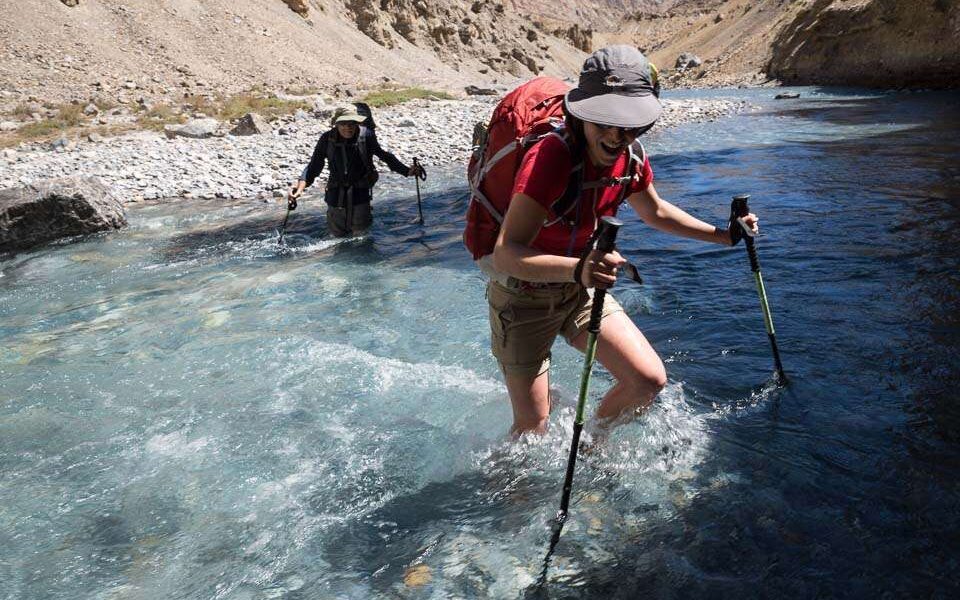
Why the Sham Valley Trek is Perfect for Cultural Travelers
In an age where many treks are measured by altitude gain and adrenaline, the Sham Valley Trek offers something entirely different—a quiet invitation to immerse yourself in the cultural soul of Ladakh. This is not just a route through mountains; it is a slow journey through memory, belief, and tradition. For travelers seeking more than physical challenge—those who crave stories, symbols, and human connection—this trek is a living classroom.
A Walking Meditation Through Living History
Every stone stupa, every barley field, and every prayer wheel along the trail tells a story. As you walk from Likir to Yangthang, or from Hemis Shukpachan to Tingmosgang, you’re not just crossing physical space—you’re moving through generations of Ladakhi life. The villages here are not showpieces for tourism; they are vibrant communities where monastic chants still echo across the fields at sunrise, where old women spin wool on porches, and children herd goats across dry riverbeds.
Connection Over Distance
The Sham trek covers relatively short walking distances, usually 4 to 6 kilometers per day, allowing for long pauses, lingering meals, and spontaneous conversations with locals. This pace is ideal for those who want to travel deeply rather than quickly. Without the pressure to summit or sprint, you begin to notice the small things—a grandfather weaving stories in the kitchen, a shrine hidden under an apricot tree, a stream that turns gold in the evening light.
A Showcase of Ladakhi Hospitality and Tradition
Staying in homestays along the Sham Valley route introduces you to a kind of hospitality that is rooted in ancient values: warmth, generosity, and spiritual depth. You’re not just fed—you’re nourished. You’re not simply housed—you’re welcomed. Many hosts will invite you to join their daily routines, whether that’s grinding tsampa (roasted barley flour), preparing momos, or lighting butter lamps in the evening. This is cultural immersion in its most sincere form.
Supporting Sustainable and Responsible Tourism
Cultural travelers often care deeply about their impact. The Sham Valley Trek is a shining example of how trekking can be sustainable. By choosing village homestays, hiring local guides, and eating locally grown food, you contribute to a circular economy that empowers remote communities and preserves Ladakh’s unique heritage. Unlike large commercial treks that rely heavily on outside resources, this model helps keep the benefits of tourism within the villages themselves.
For travelers who value slow footsteps over fast climbs, shared meals over silent selfies, and depth over distance, the Sham Valley is more than a trek—it’s a way of seeing the world differently. It reminds you that the most meaningful journeys aren’t always the most difficult, but the most human.
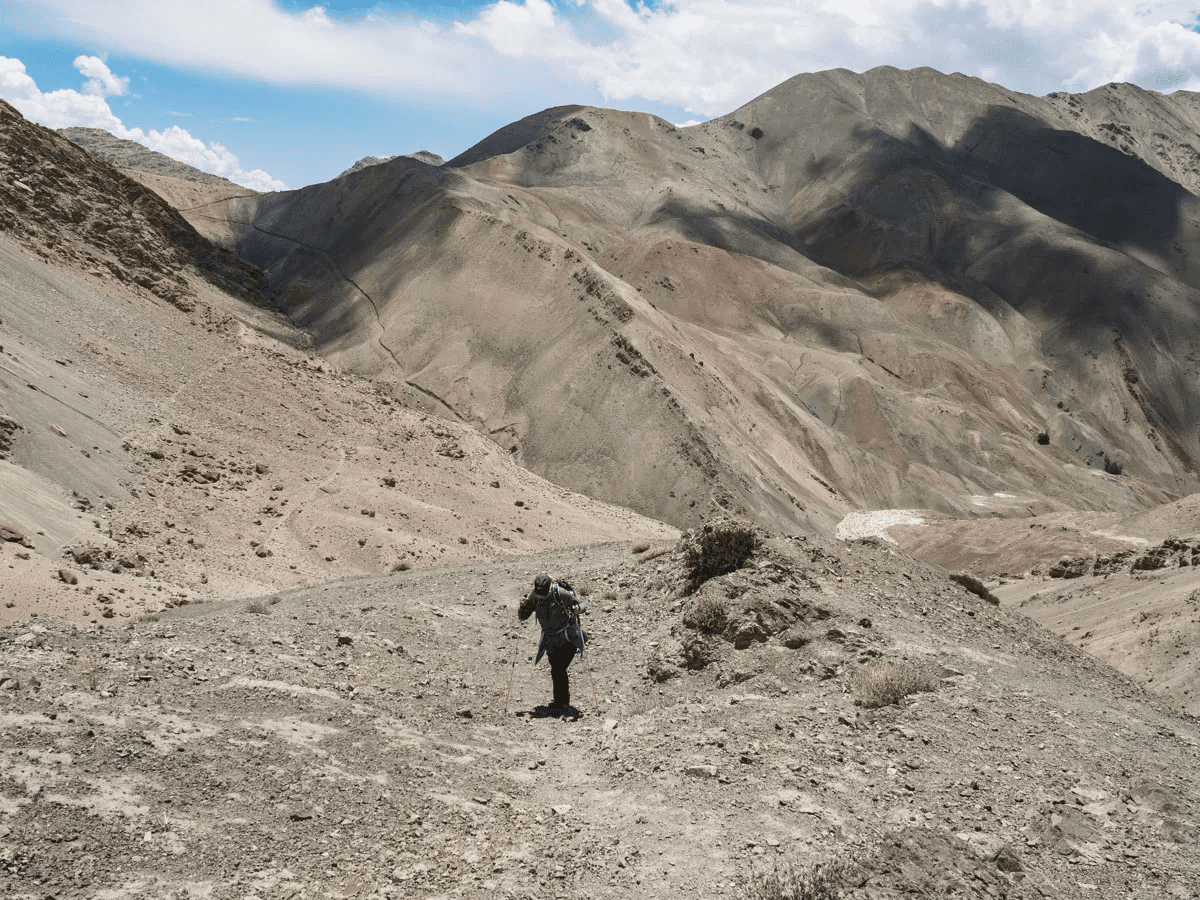
Final Tips Before You Go
The Sham Valley Trek may not be the longest or most rugged trail in Ladakh, but it is one of the most rewarding. Before you tie your boots and set off between villages and monasteries, here are a few final tips to help you travel more comfortably, respectfully, and meaningfully. In a landscape shaped by silence and tradition, it’s often the smallest gestures that leave the deepest footprints.
Pack Light, but Pack Intentionally
Because you’re staying in homestays, there’s no need to carry heavy camping gear. That said, your essentials matter. Bring warm layers for chilly mornings and evenings, a refillable water bottle (ideally with a filter or purification tablets), sunscreen, lip balm, a sun hat, and sunglasses. A headlamp, a power bank, and a lightweight sleep sheet or liner will serve you well. Footwear should be broken-in, ankle-supporting, and comfortable for daily 4–6 hour walks on uneven paths.
Gifts for Hosts: Small Tokens, Big Impact
While not mandatory, bringing a small gift for your homestay family—a few postcards from your country, local tea, or a simple handmade item—can spark warmth and connection. Avoid giving money or overly expensive items, as this may unintentionally shift the meaning of the exchange. Instead, think of something that opens a conversation and shows appreciation for the hospitality you’ll receive.
Respecting Local Customs and Sacred Spaces
Ladakhi culture is deeply spiritual. Always ask before photographing people, especially inside monasteries. Dress modestly—covering shoulders and knees is a sign of respect. When passing chortens (stupas) or mani walls (prayer stones), always keep them to your right. Inside homes and temples, remove your shoes before entering. Silence isn’t just appreciated—it’s a form of reverence.
Slow Down and Stay Curious
This is not a trek to rush. Sham Valley is best experienced when you leave space for unexpected moments: a grandmother weaving wool outside her home, a monk sweeping the monastery courtyard at dawn, a child showing you the shortcut trail between villages. These aren’t tourist attractions. They are quiet gifts from the road itself.
Leave No Trace
Carry your trash with you, avoid plastic bottles, and use eco-friendly toiletries whenever possible. The terrain may look vast and untouched, but it is fragile. Sustainability starts with awareness and respect—for the environment and for the communities who call these valleys home.
With these final thoughts in mind, you’re ready to step into one of Ladakh’s most beautiful and culturally rich journeys. The Sham Valley Trek doesn’t just leave you with photographs—it leaves you with stories, friendships, and a renewed sense of what it means to travel with intention.

